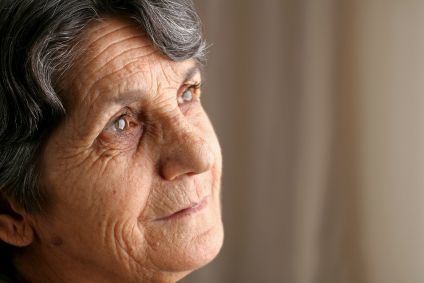Summary
To pay for these out-of-pocket caregiving expenses, 34 percent of the
respondents had used some of their own personal savings, while 23 percent
said they had cut back on their own healthcare spending.
The caregivers said money was not their most significant sacrifice – their loss of time was. However, most of the caregivers saw their caregiving as a labor of love and one they did willingly.
Article
A joint study by Evercare and the National Alliance for Caregiving Study
has revealed that half of those caring for a loved one 50 years or older
are spending on average more than 10 percent of their annual income on
caregiving expenses and often sacrifice their own long-term financial
and personal well-being to do so. The Evercare/NAC Study of Caregivers
– What They Spend, What They Sacrifice finds that family caregivers,
who have annual median income of $43,026, spend an average $5,531 a year
on caregiving, an amount that is $400 more than the average American household
spends each year on health care and entertainment combined, according
to the Bureau of Labor Statistics. Further, the Study found that at lower
income levels the annual average costs remained about $5,500 – making
their financial burden even heavier.
The Study also uncovered that one in three respondents (34 percent) had used some of their savings to cover the cost of caregiving and one-quarter (23 percent) said they had cut back on their own health care spending. But, according to the respondents, the most significant sacrifice was their own time spent caring for an older loved one. Importantly, most of the caregivers from the Study still saw their caregiving role as a labor of love and one they do willingly.
The comprehensive study was undertaken by Evercare, one of the nation’s leading health care coordination programs, in collaboration with the National Alliance for Caregiving (NAC), the leading national research authority on caregiving. It builds on data uncovered in a 2004 NAC/AARP study, which found that 34 million people care for a loved one 50 years or older, and that there are out-of-pocket costs associated with caregiving. The study provides the first in-depth look at the financial and other “personal costs” of caregiving, and indicates that as many as 17 million people, or 51 percent of the 34 million caring for a loved one 50 years or older, are spending on average more than 10 percent of their annual income on caregiving expenses. The study also uncovered significantly higher costs related to caregiving – in fact, more than twice as much as previously reported.
“Caregivers play a vital – and under-recognized – role in ensuring the health and well-being of our aging population, but in doing so they are neglecting their own futures,” says John Mach, M.D., a geriatrician and CEO of Evercare. “We need to put in place support systems and plans now to help ensure today’s caregivers can be properly cared for tomorrow – and that our society and our health care system are ready to meet their needs.”
“We knew that the costs associated with caregiving needed a closer look, but to find that more than half of the caregivers are spending more than 10 percent of their income on average sheds new light on the incredible financial burden of those we’re relying on to care for our aging population,” said Gail Hunt, president of the NAC. “The Study points to a Catch-22 for these caregivers. By spending today, they risk being unable to meet their own needs tomorrow.”
Other caregiving studies have looked at the costs to employers or the economic impact on society. A 2004 study by NAC/AARP showed that 21 percent of U.S. households contain at least one caregiver. According to the U.S. Census Bureau, that number is expected to surge as today’s Baby Boomers age and the number of Americans over the age of 65-35 million now-doubles over the next 10-15 years.
What Caregivers Spend – Where the Dollars Go
According to the 2006 U.S. Census Bureau information, the median annual
income of U.S. households is $59,894. In the Evercare/NAC Study, of the
1,000 caregivers who participated in the telephone survey, the median
household income was $43,026, with the income breakout of the respondents
as follows: 22 percent at less than $25,000, 29 percent between $25,000
– $50,000, 16 percent between $50,000 – $75,000, 10 percent
between $75,000 – $100,000, 8 percent at $100,000 or more and 15
percent who didn’t know or refused to provide that data.
The Study found the most common caregiving expenses respondents cited were:
Household goods, food and meals (42 percent)
Travel and transportation costs (40 percent)
Medical co-pays and pharmaceuticals (31 percent)
Medical equipment and supplies (22 percent)
Clothing (21 percent).
The Study also looked at the difference in costs for varying caregiving
situations. Long-distance caregivers had the highest average annual expenses
($8,728), followed by co-resident caregivers ($5,885) and those who cared
for someone living less than an hour away ($4,570).
Providing a qualitative look at caregiver costs, Evercare and NAC also asked 41 respondents to keep a detailed diary of their expenses for 30 days. The diarists spent an average of $1,029 on caregiving over the one-month period. Extrapolating this cost over a year shows that the diarists were spending twice the average of the other respondents – $12,348 annually. One diarist said, “I have gotten so far behind on all of my bills – It’s hard to say ‘no’ to my dad.” The Study did not assess whether the diarists had more complex caregiving situations than average or whether the telephonic survey respondents had possibly underestimated their costs.
What Caregivers Sacrifice – It’s Not Just Money, But Also Time
More than half of the Study respondents (53 percent) did not work while
37 percent of the respondents said they had quit their job or reduced
their work hours. The respondents also reported they were spending on
average 35.4 hours a week caring for their loved one with 19 percent providing
care for more than three years and 32 percent caregiving for more than
five years.
To accommodate the caregiving time and expenses they had, Study respondents
were making the following sacrifices:
Cutting back on leisure activities (49 percent) and vacations (47 percent)
Saving less or not at all for their children’s future (38 percent)
Using their savings (34 percent)
Cutting back on basics such as clothing, utilities or transportation (27
percent) and groceries (25 percent)
Cutting back on personal medical or dental expenses (23 percent)
“Time is the most expensive commodity I provide – but it has
no price tag”, one caregiver among the diarists commented. Despite
the sacrifice, caregivers also said it was a commitment they made willingly.
Another diarist said, “It is a way to spend quality time –
my siblings who aren’t around won’t know them or appreciate
them as much as I do because of this.”
While the survey focused on the personal financial costs of caregiving, it also revealed a ripple effect: respondents felt their out-of-pocket costs carried an emotional and physical price. Study respondents reported on the personal and emotional impact which includes heightened stress or anxiety (65 percent), difficulty sleeping (49 percent), increased financial worries (43 percent), depression or hopelessness (37 percent), and new or worsening health problems (26 percent). This is consistent with findings from last year’s Evercare/NAC Study, Caregivers in Decline (2006), which focused on health risks of caregiving.
The Importance of Supporting the Caregivers
The care provided by family caregivers is an integral part of America’s
health care system. Yet, alarmingly, statistics from a 2005 brief provided
by the Commonwealth Fund show that caregivers are twice as likely as the
general population to develop multiple chronic illnesses. People with
chronic illnesses also are among the heaviest users of medical care in
the nation; people with five or more chronic conditions make up just 20
percent of Americans age 65 and older, but account for 68 percent of all
Medicare spending according to a 2004 report by the Partnership for Solutions.

